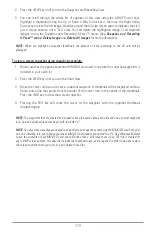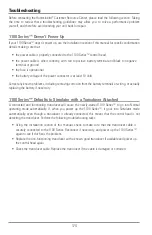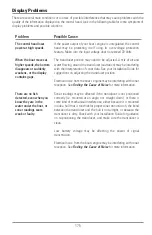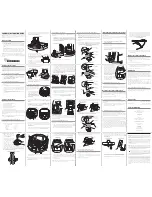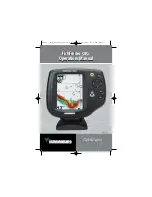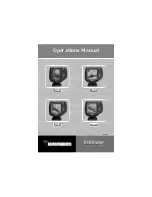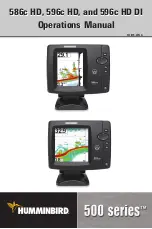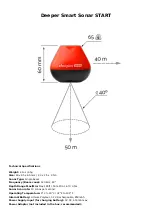
187
Glossary
GPS and Navigation Terms
Heading:
Heading describes the direction the boat is pointing and is measured in degrees (i.e. 321°, where 000° is
North, 090° East, 180° is South, 270° is West). Due to wind and waves, the boat is often traveling in a slightly different
direction than it is heading, and therefore Heading is often confused with Course Over Ground. See
Course Over
Ground
.
Map Datum:
A Map Datum refers to a particular survey of the earth’s surface that was referenced when creating a
chart (i.e. WGS84). Since the earth is not flat, and not even consistently round, a mathematical model must be used to
translate coordinates from the sphere of the earth to the flat surface of a chart. This mathematical model is the Map
Datum. Historically, many different Map Datums have been used around the world to create maps; often a reference to
the Map Datum can be found in the legend of a paper map. It is important to select the correct Map Datum setting in
your fishfinder when comparing GPS position to a paper chart to avoid slight position inaccuracies. Almost all electronic
charts use the WGS84 Map Datum and therefore, they do not require setting changes.
MMC:
MMC is an acronym for Multi Media Card. An MMC is a postage stamp-sized memory device used to store
electronic data such a maps, waypoints, routes and other information. MMC is a very rugged format suitable for the
marine environment, but it is not waterproof. The MMC is removable from Humminbird® products, and can be used in
a PC that is equipped with an appropriate card reader. MMC is the same format that many digital cameras use. See
SD
.
North, Magnetic:
North is the principle reference point of the compass (i.e. North is 000°). Magnetic North relies on
the earth’s magnetic field to align a metal pointer generally towards True North. However, due to local variations in the
earth’s magnetic field around the globe, the difference between True North and Magnetic North can be greater than
10°. See
True North
.
North, True:
North is the principle reference point of the compass (i.e. North is 000°). True North uses the axis of the
rotation of the earth as the reference for North and is constant for all points on the earth. Most GPS units default to
True North as the setting. The GPS heading may vary from the boat compass heading because the compass uses
Magnetic North. Humminbird® GPS units provide the option of selecting True or Magnetic readouts by using the North
Reference menu. See
Magnetic North
.
Present Position:
Present Position is the current location (latitude, longitude) determined by GPS. The Present Position is
indicated on-screen by a directional boat icon if the boat is moving, or a round symbol if the boat is stationary.
Route:
A Route is series of waypoints linked together in a specific sequence to define a navigation path between two
points, and saved in the fishfinder’s memory. Routes are often used when frequently traveling between two or more
locations because it is a faster and more accurate method than repeatedly selecting individual waypoints each time one
travels through the same area. Routes consist of a Start Waypoint, an End Waypoint, and a series of waypoints in
between. Users can begin navigation at the beginning, the end (to run the route in reverse) or at any waypoint in
between. See
Waypoint
.
SD:
SD is an acronym for Secure Digital. An SD card is virtually identical in function to an MMC; however, the speed at
which information can be accessed is generally faster, the storage capacity is generally larger, and the card has security
features which can be used to prevent extracting the data from the card. SD is the same format that many digital
cameras use. See
MMC
.
Selective Availability:
Selective Availability (SA) is a GPS system “feature” that can be implemented by the U.S.
Department of Defense (DoD) to degrade the accuracy of GPS positioning information. With SA active, the GPS is
accurate to within 100 meters 95% of the time. With SA inactive, the GPS is accurate to within 45 meters 95% of the
time. Currently, SA is inactive and the consumer can enjoy the greater precision GPS provides; however, the DoD
reserves the right to activate SA at any time.
Speed Over Ground (SOG):
Speed Over Ground is the measurement of the boat’s progress across a given distance, and
is the speed measurement provided by GPS. An alternate, Speed Through Water, is provided by a speed paddlewheel,
and is the measurement of the flow past the boat, which may vary depending on current speed and direction. Speed
Over Ground is optimal for navigation because accurate destination times can be derived from this measurement.
Humminbird® products allow for input and display of both speed measurements.

